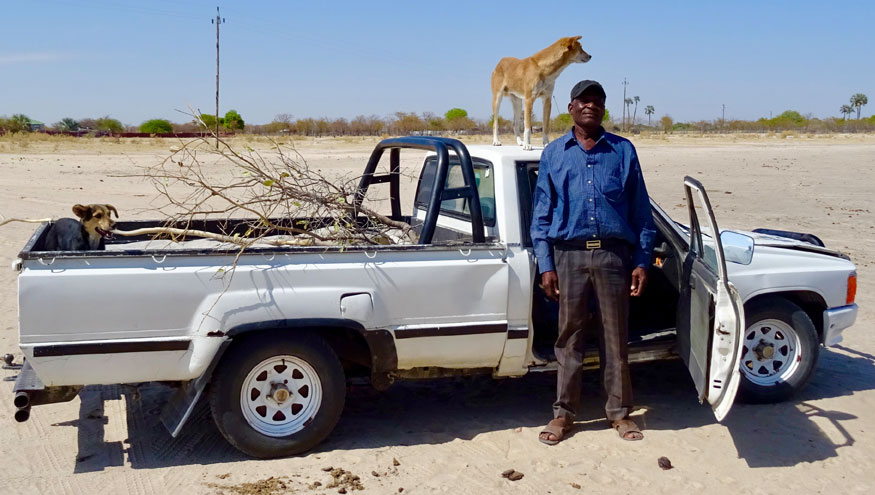26 April 2022
The Republic of Namibia has achieved a significant reduction in human rabies deaths since 2015 from an average of 26 cases to 0-2 cases annually. Significant progress has also been made in controlling the disease in dogs and livestock. The country’s success is attributed to strong national leadership and commitment, a rigorously designed National Control Strategy based on a multi-sectoral One Health approach, and a strategic focus on the country’s Northern Communal Areas where dog rabies is endemic.

Photo Credit: ©Frank Busch
Key challenges
The Northern Communal Areas is a vast area, covering over 260,000 square kilometers with limited infrastructure and interconnectivity. Dog rabies is most concentrated in areas of small-scale agriculture on communal land where many people rely on dogs for security and cattle and goats for their livelihoods. Practical hurdles to be overcome include how to reach all communities and ensure sufficient trained workers are able to deliver the rabies vaccines.
Starting with a pilot phase in 2016 in the Oshana region, the government rolled out free dog rabies vaccinations via veterinarians. Vaccines were also delivered at targeted central points such as cattle vaccination points, as well as house-to-house campaigns. Because children often have the task of taking care of dogs, rabies education was introduced in class and vaccination campaigns were held during school holidays so that they could bring along their dogs. Awareness-raising among the population was carried out in local languages through radio, the local media with the support of the Ministry of Education, Ministry of Information and Communication Technology, local councils and the Ministry of Education. Churches have also been key information partners.
The national plan
In 2017 a national rollout got underway, focused on the other 7 regions of the Northern Communal Areas. The objectives were to reduce human rabies deaths through effective dog rabies control, improve vaccination coverage in the dog population with an initial focus on rabies hot spots and secure timely post-exposure prophylaxis (PEP) for people suspected of being infected by a rabid animal.
A multisectoral, One Health approach guided all planning and implementation. The national strategy is implemented by the Directorate of Veterinary Services (DVS), led by the Ministry of Agriculture, Water and Land Reform in consultation with the Ministry of Health and Social Services (MoHSS), Ministry of Forestry and Tourism, University of Namibia and the Veterinary Association of Namibia. Germany’s Friedrich-Loeffler-Institute provided technical assistance via its rabies and One Health experts with the financial support from Germany’s Federal Ministry of Nutrition and Agriculture and the Federal Ministry of Health. This helped to further shape and refine the national rabies elimination strategy and improve its implementation in cooperation with the national rabies coordinator and WOAH.
Multiple benefits
Not only has Namibia’s rabies strategy saved lives and seen dog vaccination rates increase steadily, it has also delivered many other benefits. Integrated Bite Case Management (IBCM), has strengthened cooperation between the DVS and the MoHSS, leading to data-sharing that will further improve rabies control; veterinary services have improved capacity through training and investment; and diagnostic capacity has continued to improve. A 2021 ‘knowledge, attitudes and practices’ (KAP) study relating to rabies and systematic data collection using a smartphone application will help to optimize future vaccinations strategies. Other milestones are the development of a cross-border rabies control strategy with Angola and a successful field trial on oral rabies vaccination of free-roaming dogs, the first of its kind in Africa.
Namibia’s Rabies Control Strategy was one of the first national rabies plans to be endorsed by WOAH in 2021, validating its quality as well as Namibia’s commitment to regular reporting on progress. The majority of funding for rabies control has come from Namibia’s Department of Veterinary Services’ recurrent budget, but the German government has provided financial support to the program since 2015/16 and renewed that support in 2022/23. The successful roll out of the Rabies Control Strategy, combined with WOAH endorsement and strong political support from the Ministry of Agriculture have further ensured sustained funding from the national budget.